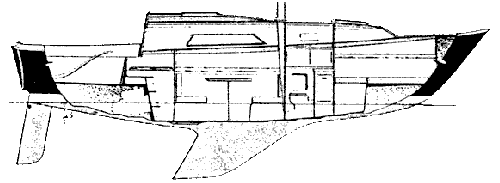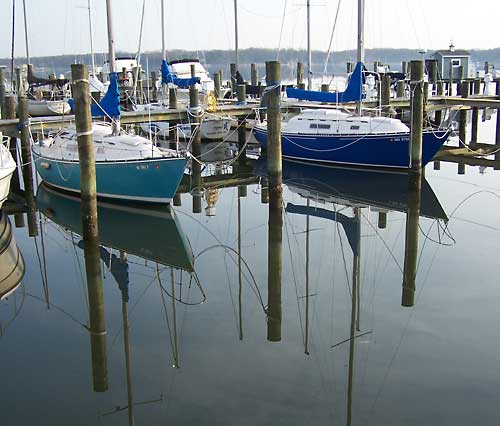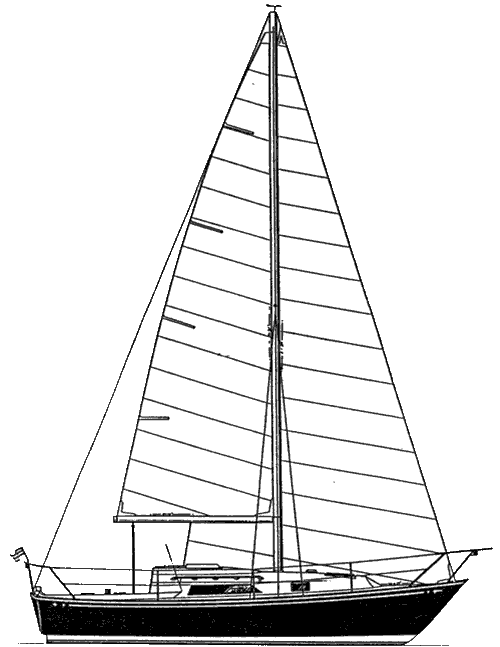
Evolution of the C&C 27 – Marks I to IV
One of the best production boats ever built, the C&C 27 was the yacht that set C&C Yachts on the road to becoming a world leader in fibreglass sailboats. Of all the designs produced by C&C, the 27 was by far their most successful. There may be many reasons for her success. Perhaps it's her outstanding sailing ability, her roominess and comfort as a cruiser, or the quality of her construction. Or maybe it's simply that, for so many sailors, she's the perfect sized yacht. Whatever the reasons, with nearly 1,000 hulls produced, the C&C 27 remains that classic Canadian yardstick, against which successive competitors are still being measured, in many ways. Moreover, between 620 and 650 additional 27's were produced under the Trapper name in England. On top of that, an unknown number of 27's were produced by a respected Austrian yard – unknown to C&C! The overseas part of the 27 story is detailed here, in The C&C 27's Overseas Cousins – Trapper and Korneuburg.
To keep George Cuthbertson's design current, C&C produced four versions of the original 27. Internally, C&C only used the Mark I and Mark II designations, the first for the original hull-form and the latter for a stretched and subtly reshaped development from the original. Other changes were made, however, and to recognize the changed character of the boat, 27 sailors have designated these as the Mark I, the Mark II (aka, the Mark IA "Tall Rig"), the Mark III and the Mark IV. After production of the Mark IV ceased, C&C introduced a completely new boat named the C&C 27; this boat, described in Sea Change, is generally known as the Mark V.
In addition to descriptions of the changes made to the original design through four variations, this page includes:
The images on this page show the C&C 27 Mark IV; see the Overview page for images of a Mark I and Sea Change for the Mark V. Photos showing notable differences in the versions are shown on the Guide pages.
Mark I: Hulls 1 to 215 were produced from 1970 to 1972. The Mark I's had the slightly shorter hulls, and the shortest rigs with two side shrouds, (one lower and one upper). Their mainsail travellers were aft in the cockpit. They all had tillers, and Universal Atomic 4 gas engines. A few of the very first hulls were built under licence by Hinterhoeller Yachts.
Mark II: Hulls 216 to 451 were produced from late 1972 to 1974. The Mark II hulls were the same as the Mark I's. Their sail area also remained the same but they had a two-foot-taller, "higher-aspect" rig, and their standing rigging now had 3 side shrouds (two lowers and one upper). The aft-travellers, tillers, and Atomic 4 gas engines also remained the same.
Mark III: Hulls 451 to 914 were produced from 1974 to 1981. The Mark III was really cast from a new mould. The hull was stretched, with six inches added to the cockpit/stern area, but no change in the beam. Draft was increased, ballast was decreased, and the overall displacement remained the same. The rig height was again increased by another 2 feet, this time with an increase in sail area. The rudder took on a higher aspect shape. Early Mark III's had clear port lights with aluminum casings. These were later replaced by a recessed design with smoked acrylic. Later hulls had an anchor locker in the bow, and lifelines became toe rail-mounted. Small changes were made to the interior detailing, but the basic layout remained unchanged. A key change in the Mark III was that the cockpit was lengthened, and the traveller was now mounted forward. This opened up the cockpit, and wheel steering became the popular option in 1975. Diesel power became available in 1978, and by the end of the Mark III's run, the single-cylinder Yanmar diesel had become standard.
Mark IV: Hulls 915 to 984 were produced from 1981 to 1982. The greatest change was cosmetic, with the primarily teak interior giving way to the style adopted in the rest of the C&C line: off-white melamine trimmed with teak and dark-anodized aluminum mouldings. Reportedly, there was consideration to marketing the boat as the Landfall 27 (Landfall distinguished C&C's purely cruising-oriented offerings from the cruiser-racers that were the foundation of the company's reputation). Other substantial changes included setting the forestay back about seven inches to accommodate a bow roller and upgrading auxiliary power to a two-cylinder Yanmar (though many boats were built with gas engines).

Specifications
The information below is for general reference. Class-sanctioned measurement data can be found in the C&C 27 Class Association Constitution & Rules.
Hull No. Year Built LOA LWL Beam Draft Ballast Disp. Rig Ht. Sail Area Mark I 1-167 1970-72 27'-4" 21-0" 9'-2" 4'-3" 2512 lb. 5500 lb. 33' 0" 343 sq. ft. Mark II 168-451 1972-74 27'-4" 21-0" 9'-2" 4'-3" 2512 lb. 5500 lb. 35' 0" 343 sq. ft. Mark III 452-914 1974-81 27'-10.5" 22'-10.5" 9'-2" 4'-6" 2116 lb. 5500 lb. 37' 0" 372 sq. ft. Mark IV 915-979 1981-82 27'-10.5" 22'-10.5" 9'-2" 4'-6" 2116 lb. 5500 lb. 37' 0" 372 sq. ft. Maximum Spinnaker & Headsail Measurements
Roll your cursor over the rig diagram above to see major measurements visually defined. You can find more precise definitions along with terms primarily of interest to official measurers and sailmakers (such as MGM, the mid-girth of the mainsail) on the ISAF's sail measurement pages.
Mark I 33'0" 11.75 13.4 19.39 (165%) 13.4 15.51 24.12 (180%) Mark II 35'0" 11.75 12.5 19.39 (165%) 12.5 15.51 22.50 (180%) Mark III 37'0" 11.75 11.75 18.21 (155%) 11.75 14.57 21.15 (180%) Mark IV 37'0" 11.17 11.75 18.43 (165%) 11.75 14.74 21.15 (180%) Maximum Mainsail Measurements
P E HBL MGU MGM Mark I 28.5' 10.5 0.50 4.25 7.08 Mark II 29.0' 9.5 0.50 3.97 6.59 Mark III 31.0' 10.0 0.50 4.15 6.88 Mark IV 31.0' 10.0 0.50 4.15 6.88


